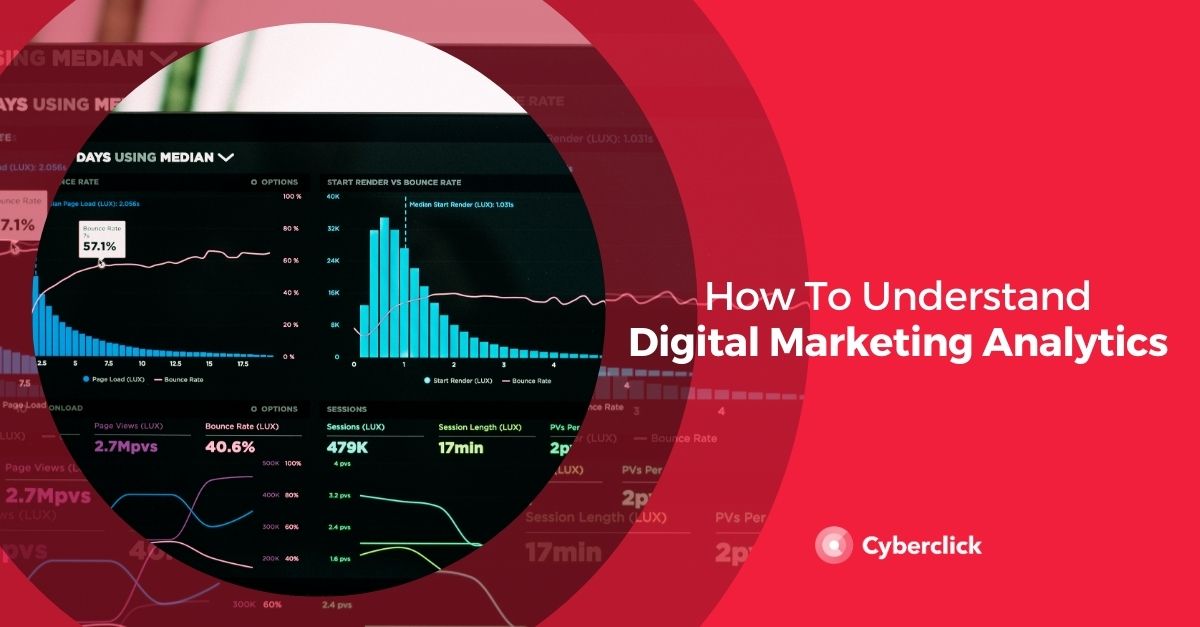Digital analytics is fundamental in a digital marketing strategy and in any other area of business. It is what allows company or team to know if the actions they are taking are fruitful or if it is time to change course.
In this article we will go into detail on digital analytics and on how you can run a successful analysis at your company.

What Is Digital Analytics?
Digital analytics, also called web analytics, is the study of the qualitative and quantitative data generated by a business in order to improve its strategies and results. For this analysis to be successful, it is important to have a large amount of data and well-defined objectives.
Within web analytics, there are two types of conversion data:
-
Macro conversions: those that generate benefits directly, such as the sale of a product.
-
Micro-conversions: those that indicate that macro-conversions are likely to increase in the future, such as newsletter subscriptions or an increase in the number of followers on social networks.
Benefits of Digital Analytics
Implementing digital analytics can help you achieve great results. Below we list some of the ones we consider most important, though this is not an exhaustive list. We mainly focused on the benefits related to digital presence, customer insights, and increasing profits.
Boost SEO
SEO, or search engine optimization, is very important in any inbound marketing strategy. Achieving a good position in search engines helps your brand gain visibility, authority, and increased brand awareness. To know if your SEO positioning is improving, one of the best digital analytics tools is Google Analytics. This platform offers extensive information on the traffic coming to your website.
Identify New Business Opportunities
Digital analytics allows you to measure the success (or failure) of the launch of a new product, service, or campaign. The results you collect will give you the information you need to see how your launch is going and to make modifications of any are necessary.
Improve the Buying Process
Knowing how you can improve your website is essential to increasing your sales. Many times, whether a user decides to buy or not depends on the comfort with which they navigate your site, so creating an intuitive, attractive website is essential.
You may have a very high cart abandonment rate, in which case it can be a good idea to send a cart abandonment reminder email. Or maybe your problem is that users do not complete the purchase process and are reluctant to enter their credit card details, in which case they may not feel secure enough and you might need to include a message to assure them that it's safe to enter their payment details.
Whatever the issue may be is, it is important that you identify it, and digital analytics can be a great help in this process.
Know the ROI
The ROI or Return on Investment is something that every company should know as this helps you understand if your investments in marketing are profitable or not. There are many digital analysis platforms (which we will talk about below) that can offer you information about this indicator, but the formula is the following:
profit - investment / investment x 100
With this information, you will be able to plan your spending more optimally and experience greater growth.
Provide Information About Your Target Audience
Knowing both qualitative and quantitative characteristics of your target audience is fundamental to any marketing strategy. To connect with your audience, you need to know their needs, their pain points, and where they spend time online. Without this information it will be difficult to connect with them and make them aware of your product or service. With web and social media digital analytics, you can get a lot of information about them and refine your communication strategy.
Improve Marketing Strategies
Digital analytics provides data about how your SEO strategies are working and gives you information about your paid campaigns and their results. In fact, the very platforms where you launch campaigns are often an excellent source of information and can provide large amounts of data. This is key, since large amounts of money and time are invested in paid marketing and it is important to know if you efforts are succeeding or not.
How to Do a Digital Analysis
Now that you know more about digital analytics, it is time for us to look at how you can implement them. Luckily, this is not a very complex process. It will, however, require constant checks and modifications in order to perfect your strategy.
1. Establish Objectives
This is the first step and a very important one. If you do not clearly establish what your company's marketing objectives are, you will not be able to assess how your strategies are working.
To set your goals, it is important to be as clear and specific as possible. If one of your objectives is to increase sales, define the time period that this should happen in and the percentage increase you want to see.
2. Define the KPIs
KPIs, or Key Performance Indicators, are quantitative values that can be monitored, compared, and measured to track the performance of a strategy. Two of the most commonly measured KPIs are:
- Conversion rate: this is the percentage of people who visit your site and make a purchase. It is obtained by dividing total visits by sales.
- Visitors: this is simply the number of people who visit your website.
Of course, you can choose many other KPIs to measure, including those on other platforms, such as social networks. The interesting thing about these values is to see how they evolve over time and what trends develop.
3. Gather Data
Once you have clarified your objectives and the KPIs you want to measure, it is time to collect data from the different platforms you are using. In the last point of this article we will explain which tools will allow you to carry out this step.
4. Design a Report
The tools that will be useful in point 3 can also help you here. They automatically cross-reference data to compare and draw conclusions, which will help you to get the information you need.
5. Check
Now it is time to act according to the data you have collected. It is time to change any strategies that are not working and to continue or improve those that are. Then, after a period of time, go back to step three to gather more data and see if the changes you have made have paid off.
Tools for Implementing Digital Analytics
The tools you can use in step three and step four of your digital analytics can be divided into two groups: tools to measure web results and tools to measure results in social networks.
The best tools for analyzing social networks are often those provided by the platforms themselves. Facebook Analytics, Instagram, Pinterest Analytics, Twitter Analytics can provide a lot of valuable information about your social media strategy. However, if you want to use external platforms for your digital analytics process we recommend Audiense, Iconosquare, Twitonomy and LikeAlizer.
Finally, we can't forget about Google Analytics, one of the most best for digital analytics. What we like the most about it is that it is intuitive and you can use it in a very personalized way. SEMrush or Webtrends are also very useful platforms that will allow you to see the evolution of your website or ecommerce and provide a lot of valuable information.
Responsable de la estrategia de contenidos y visibilidad en Cyberclick, con enfoque Allbound y especialización en posicionamiento SEO, GEO y automatización con IA. Gestión avanzada del CRM con HubSpot: base de datos, workflows, lead nurturing, scoring y reporting. Experiencia en marketing digital, comunicación corporativa y periodismo, uniendo estrategia, creatividad y tecnología para captar y convertir leads cualificados.
Responsible for content and brand visibility strategy at Cyberclick, with an Allbound approach and specialization in SEO, GEO (Generative Engine Optimization), and AI-powered automation. Advanced HubSpot CRM management: database segmentation, workflows, lead nurturing, scoring, and reporting. Background in digital marketing, corporate communications, and journalism—combining strategy, creativity, and technology to attract and convert qualified leads.






Leave your comment and join the conversation